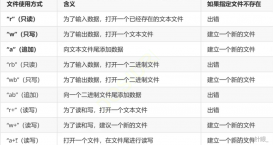C語言實現矩陣
矩陣作為一個結構體而言,至少要包含行數、列數以及數據。
|
1
2
3
4
5
6
7
|
#include <stdio.h>#include <stdlib.h>#include <string.h>typedef struct{ int row, col, size; double *data;} Matrix; |
特殊矩陣
接下來通過這個結構體實現一些特殊的矩陣,例如包括相同元素的矩陣、對角矩陣等。
|
1
2
3
4
5
6
7
8
9
10
11
12
13
14
15
16
17
18
19
20
21
22
23
24
25
26
27
28
29
30
31
32
33
34
35
36
|
#define SetBase(mat) \ (Matrix*)malloc(sizeof(Matrix));\ mat->row = row;\ mat->col = col;\ mat->size = row*col;\ mat->data = (double*)malloc(mat->size*sizeof(double))//特殊矩陣Matrix* Sames(double n, int row, int col){ Matrix* mat = SetBase(mat); for (int i = 0; i < mat->size; i++) mat->data[i]=n; return mat; }#define Ones(row,col) Sames(1,row,col)#define Zeros(row,col) Sames(0,row,col)Matrix* Diag(double n, int row, int col){ Matrix* mat = Sames(0,row,col); for (int i = 0; i < min(row,col) ; i++) mat->data[i*col+i] = n; return mat;}#define Eye(row,col) Diag(1,row,col)Matrix* CountMatrix(int row, int col){ Matrix* mat = SetBase(mat); for (int i = 0; i < mat->size; i++) mat->data[i]=i; return mat;}//生成[L,R]范圍內的隨機矩陣Matrix* RandMat(int row,int col, double L, double R){ Matrix* mat = SetBase(mat); int size=R-L; for (int i = 0; i < mat->size; i++) mat->data[i] = rand()%size+L; return mat;} |
特殊矩陣驗證
由于要識別輸入的函數,所以先新建一個函數的結構體
|
1
2
3
4
5
6
|
typedef struct{ char* name; int len; int numPara; //參數個數 double params[MAXLEN]; //參數列表}Func; |
然后通過字符串來生成Func
|
1
2
3
4
5
6
7
8
9
10
11
12
13
14
15
16
17
18
19
20
21
22
23
24
25
26
27
28
|
//用于識別函數void initFunc(Func* func,char* str){ int i = -1; int j = 0; while(str[++i]!='('){} func->len = i; func->name = (char*)malloc(sizeof(char)*func->len); for (j = 0; j < i; j++) func->name[j] = str[j]; func->name[i] = '\0'; int start = ++i; char temp[MAXLEN]; j = 0; while (str[i]!=')') { if(str[i]==','){ temp[i-start]='\0'; start = i+1; func->params[j]=atof(temp); j++; }else temp[i-start]=str[i]; i++; } temp[i-start]='\0'; func->params[j]=atof(temp); func->numPara = j+1;} |
接下來需要實現打印矩陣的函數
|
1
2
3
4
5
6
7
8
9
10
|
void printMat(Matrix* mat){ printf("mat:"); printf("%dx%d=%d\n",mat->col,mat->row,mat->size); for (int i = 0; i < mat->size; i++) { printf("%f,",mat->data[i]); if((i+1)%mat->col==0) printf("\n"); }} |
最后是main函數
|
1
2
3
4
5
6
7
8
9
10
11
12
13
14
15
16
17
18
19
20
21
22
23
24
25
26
27
28
29
30
31
32
33
34
35
36
37
38
39
40
41
42
43
|
int isFunc(Func* func, char* str){ for (int i = 0; i < func->len; i++) { if(func->name[i]!=str[i]) return FALSE; if(str[i]=='\0') return FALSE; } return TRUE;}#define intPara (int)func->params#define floatPara func->params//#define isFunc(str) strcmp(func->name,str)int main(){ //char* str = (char*)malloc(sizeof(char) * MAXLEN); char str[MAXLEN]; Matrix* mat = NULL; Func* func = (Func*)malloc(sizeof(func)); while(1) { printf("please input:"); gets(str); initFunc(func,str); if(isFunc(func,"Sames")) mat = Sames(floatPara[0],intPara[1],intPara[2]); else if(isFunc(func,"Ones")) mat = Ones(intPara[0],intPara[1]); else if(isFunc(func,"Zeros")) mat = Zeros(intPara[0],intPara[1]); else if(isFunc(func,"Diag")) mat = Diag(floatPara[0],intPara[1],intPara[2]); else if(isFunc(func,"Eye")) mat = Eye(intPara[0],intPara[1]); else if(isFunc(func,"CountMatrix")) mat = CountMatrix(intPara[0],intPara[1]); else if(isFunc(func,"RandMat")) mat = RandMat(intPara[0],intPara[1], floatPara[2],floatPara[3]); else continue; printMat(mat); }} |
驗證一下
|
1
2
3
4
5
6
7
8
9
10
11
12
13
14
15
16
17
18
19
20
21
22
23
24
25
26
|
PS E:\Code\PL\calc> .\a.exeplease input:Ones(4,4)mat:4x4=161.000000,1.000000,1.000000,1.000000,1.000000,1.000000,1.000000,1.000000,1.000000,1.000000,1.000000,1.000000,1.000000,1.000000,1.000000,1.000000,please input:Zeros(3,5)mat:5x3=150.000000,0.000000,0.000000,0.000000,0.000000,0.000000,0.000000,0.000000,0.000000,0.000000,0.000000,0.000000,0.000000,0.000000,0.000000,please input:RandMat(3,3,0,100)mat:3x3=941.000000,67.000000,34.000000,0.000000,69.000000,24.000000,78.000000,58.000000,62.000000,please input:Eye(3,3)mat:3x3=91.000000,0.000000,0.000000,0.000000,1.000000,0.000000,0.000000,0.000000,1.000000,please input:CountMatrix(2,4)mat:4x2=80.000000,1.000000,2.000000,3.000000,4.000000,5.000000,6.000000,7.000000, |
以上就是C語言線性代數算法實現矩陣示例代碼的詳細內容,更多關于C語言算法的資料請關注服務器之家其它相關文章!
原文鏈接:https://blog.csdn.net/m0_37816922/article/details/120622463?spm=1001.2014.3001.5501














